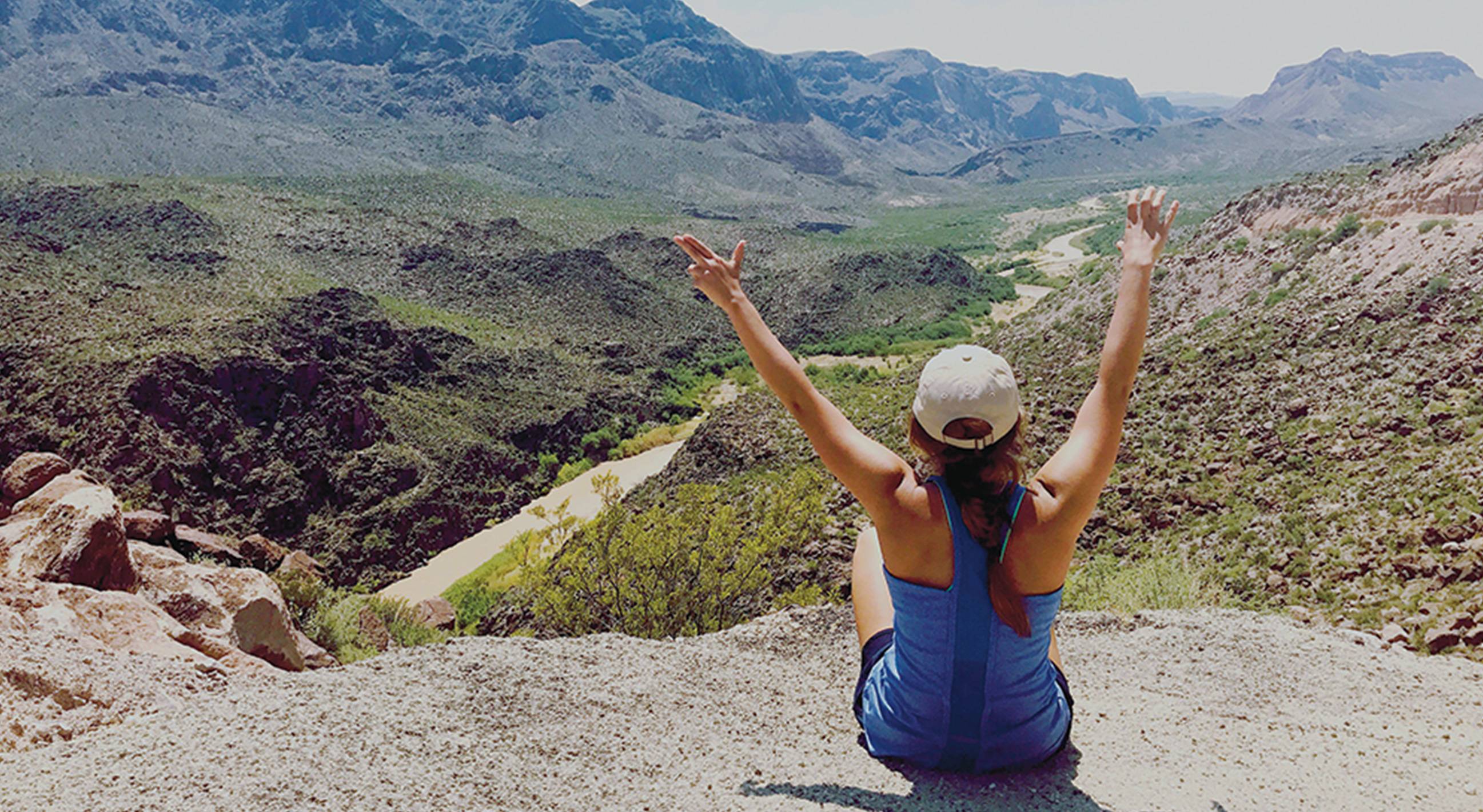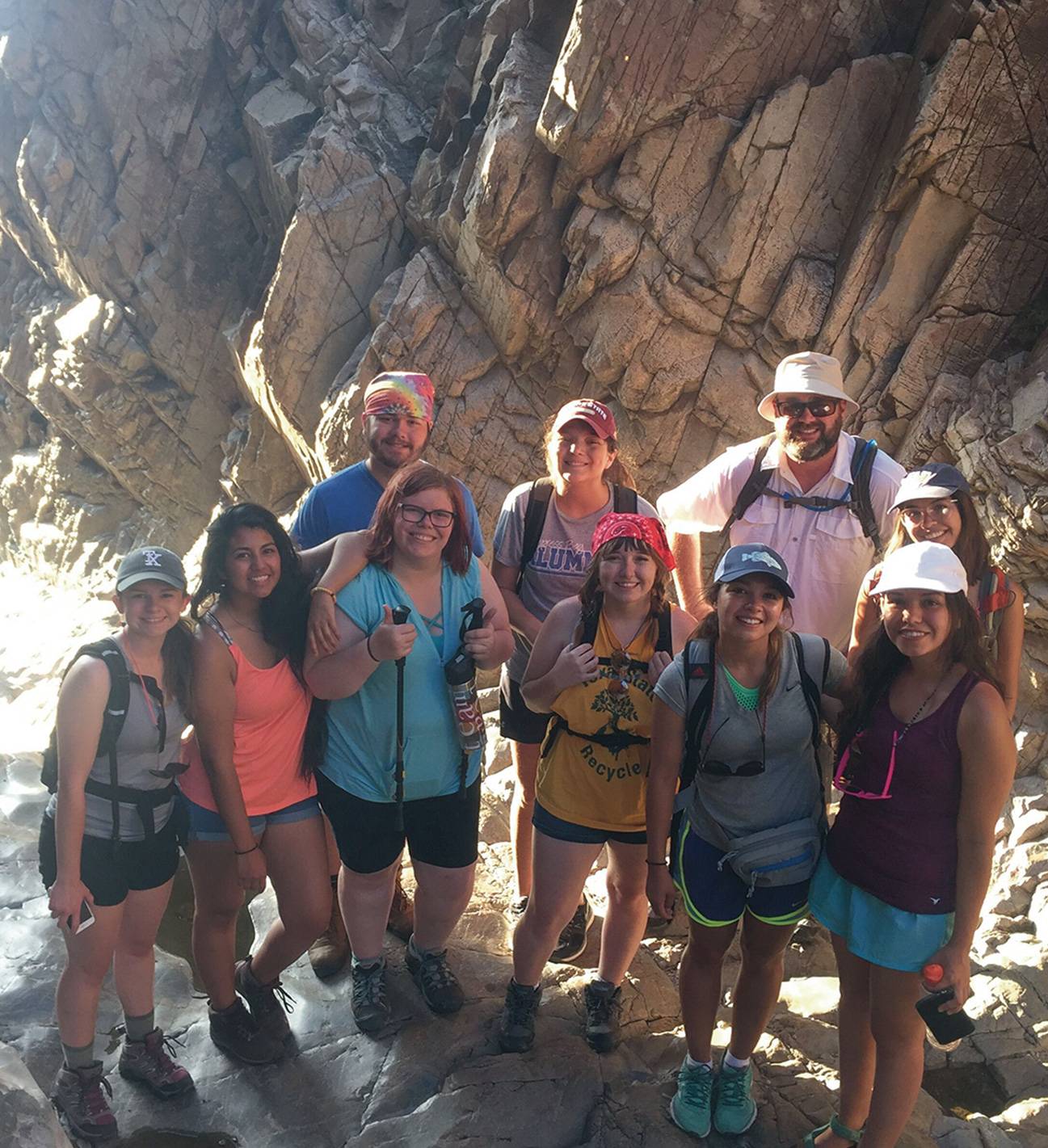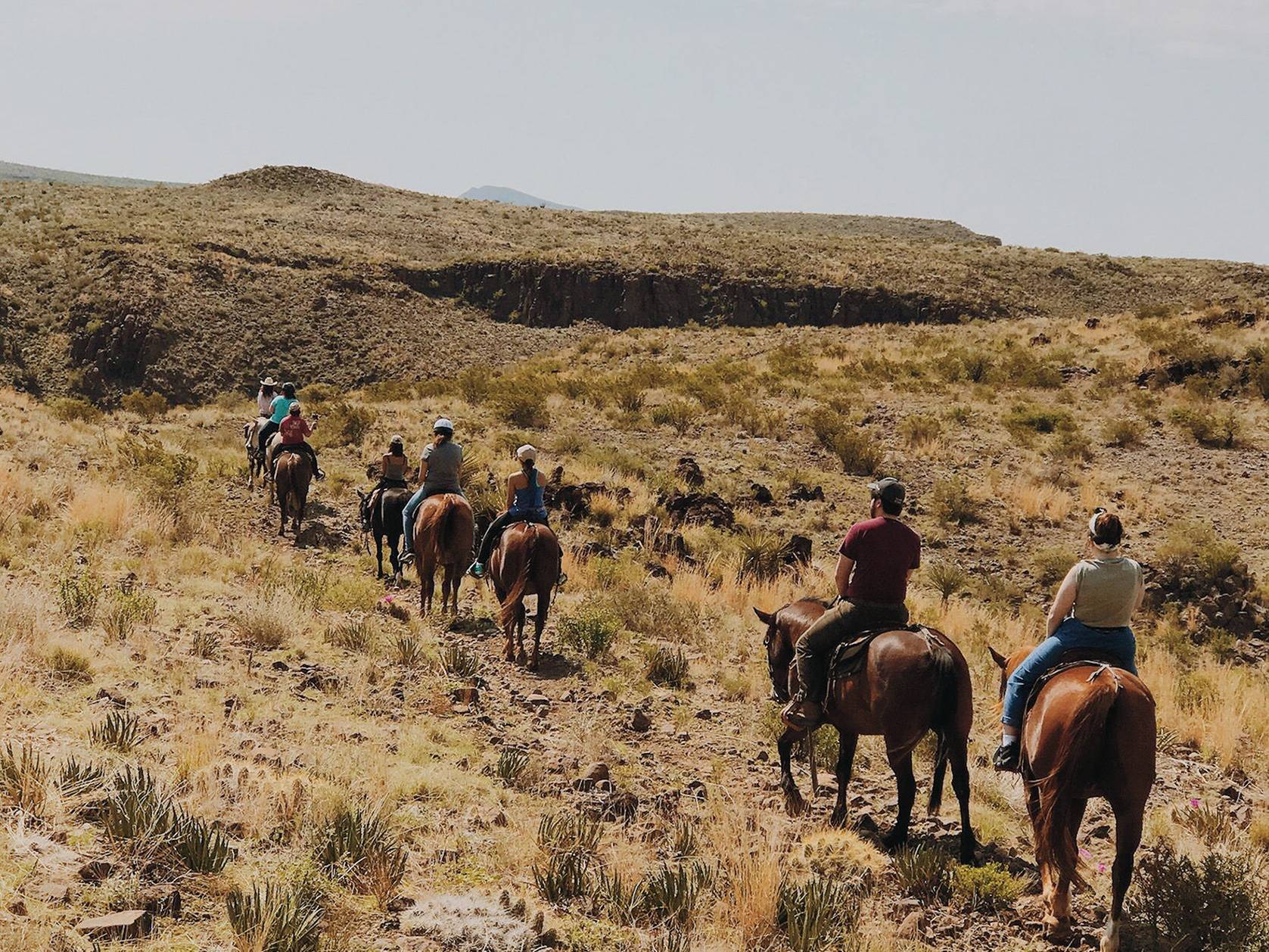
Journalism students report from state, national parks as they create content for digital and social media outlets
by Nicole Hengst
Editor’s note: Nicole Hengst earned her master’s degree in mass communication in May 2017 and then hit the road as the program assistant for a group of Texas State University students taking part in this Study-in-America program.
Nine students, seven national and state parks in 14 days. That is what summer school looked like for a group of Texas State University students who took part in the first Study-in-America program offered by the School of Journalism and Mass Communication.
The students traveled through West Texas and New Mexico with two professors and a program assistant to conduct interviews, shoot photos and video, and produce stories. The students earned six hours of college credit by writing travel and feature stories and producing mini-documentaries and social media content for each of the parks under the direction of faculty members Dale Blasingame and Kym Fox.
The summer program is the outgrowth of a class developed a year ago by Blasingame in partnership with Texas Parks and Wildlife Department that is aimed at using social media to tell stories with the goal of attracting young visitors to the parks. The 2017 summer program included a feature writing class taught by Fox and added travel to national parks. The class documented the students’ daily adventures with a travelogue and used the class hashtag #SJMCparks on social media.

The group traveled in three rented SUVs filled with camera gear, camping equipment, and food. Lodging varied from state park housing to tents. The class involved several weeks of study prior to the trip and a week of finishing projects when the group made it back to the university in mid-June. Students paid tuition and a program fee for the experience. Participanting students included Alexa Altschul, Cassandria Alvarado, Zachary Ienatsch, Nia Jaramillo, Haley Jenkins, Chelsea Karrenbrock, Dalia Moreno, Ashley Simpson, and Rebecca Stone.
All told, the 14-day Study-in-America program covered 3,000 miles — and more than 204,000 steps by one Fitbit count.
"A class and a trip like this gets students out of their comfort zone. Students are subjected to the real-time pressure of conducting interviews in the field, producing content on deadline and doing it all while in unfamiliar territory," says Fox, an associate professor of practice.
"This is the real world where microphones sometimes fail, and no cell service means you can’t post the social media content your client is expecting. Problem-solving and troubleshooting are critical skills required of virtually every profession but especially in journalism and PR," she says.
The experience, Fox explains, can also test the talents of the faculty. "Sometimes it means teaching 1,000 feet underground in Carlsbad Caverns, helping students figure out how to shoot photos in such low light.
"One student found a group of caving volunteers cleaning the caverns’ pristine pools with spoons on long poles. It’s a great story, but it’s also a challenge to take notes in near darkness and to remember to ask all the right questions because we aren’t driving back to Carlsbad if you forgot to ask something."
There are 15 Study-in-America activities planned for 2018 and 2019. Pending final approval from The Texas State University System Board of Regents, the colleges and departments include: the College of Liberal Arts (geography, philosophy, English, history); the College of Fine Arts and Mass Communication (theatre & dance, journalism); the College of Education (health and human performance; and curriculum & instruction); the College of Science & Engineering (biology); the College of Applied Arts (social work, family and consumer sciences); and the College of Health Professions.
For the journalism and mass communication students, the trip also involved working in teams to cook and clean, often in the wilderness out of the back of a Suburban. "There were a lot of laughs," says junior electronic media major Lexi Altschul. "We became sort of like family, which was cool."
Managing all of the professional gear was another issue. The group traveled with tripods, gimbals (camera sticks), iPhone mounts, microphones, a GoPro, a 360-camera, and other equipment. Several of the devices needed to be charged nightly, which posed problems at camp grounds. The lack of cell service at many of the parks also presented a challenge. One of the goals of the class was to post high-quality photos to Instagram and share stories via Snapchat that would encourage other young people to visit the parks.
"It was beautiful and amazing, and probably one of the coolest things I’ve ever done," says senior journalism major Haley Jenkins.
Some of the students had never been camping and others were camping pros. "I’m not really an outdoorsy person … and going out here really sparked something in me to want to be outdoors more, to want to explore different places and the beautiful parks and be in nature. It’s wonderful," says public relations major Nia Jaramillo, a San Antonio native.
